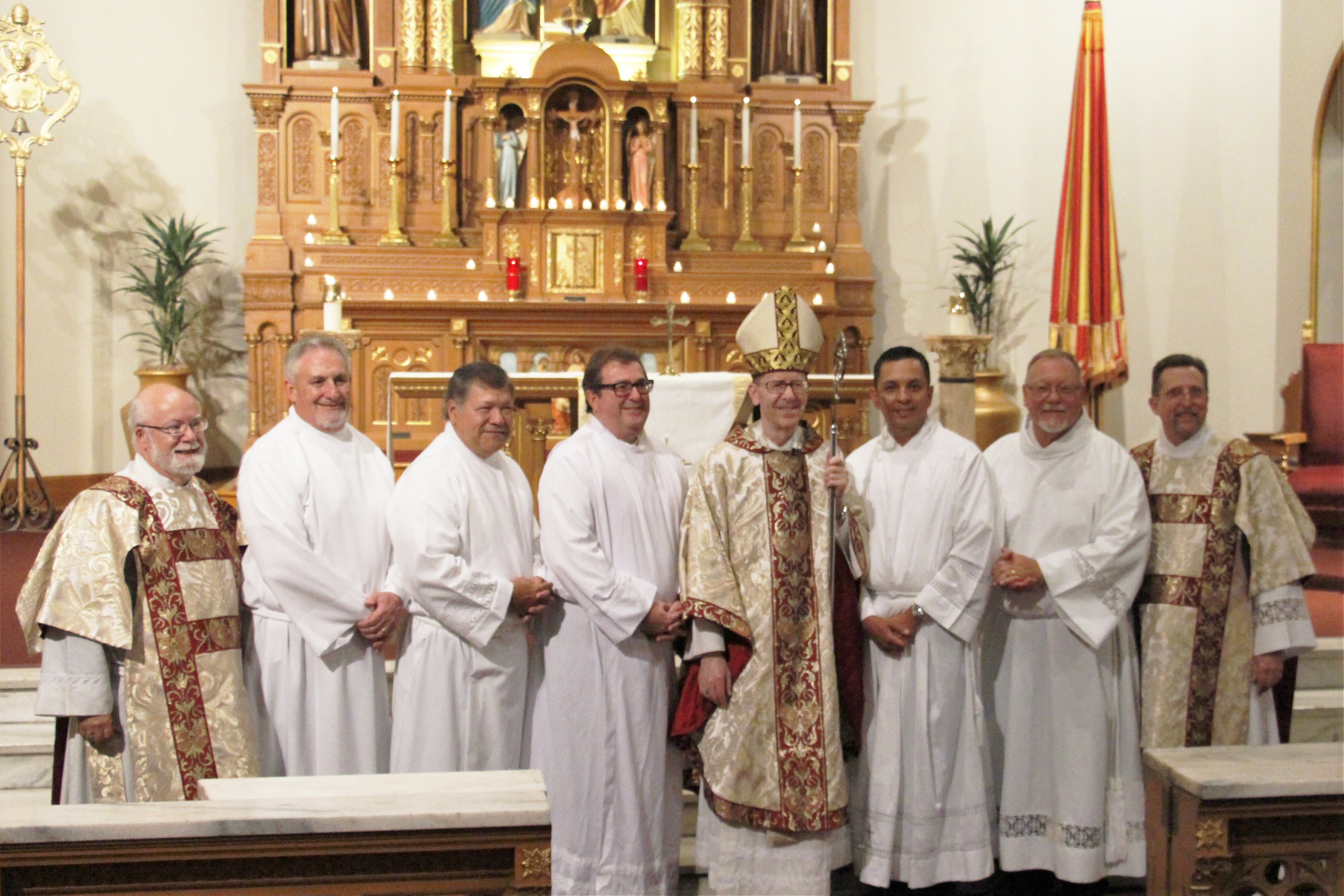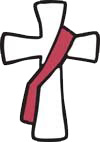
Permanent Deacon Ordination
Vespers: 6 p.m., Fri., Nov. 4,
St. Thomas the Apostle Parish, 2312 E. Campbell Ave.Mass: 10 a.m., Sat., Nov. 5,
Ss. Simon and Jude Cathedral, 6351 N. 27th Ave.
The five men being ordained to the diaconate and their parish assignments are:
- Dr. William (Billy) Chavira — St. Thomas the Apostle
- Chris Giannola — St. Joseph the Worker, Williams
- Gary Scott — St. Maria Goretti, Scottsdale
- Marvin Silva, Ph.D. — St. Mary, Chandler
- Anthony (Tony) Smith — Ss. Simon and Jude Cathedral
Click here to learn more about the Permanent Diaconate.
Following in the footsteps of St. Stephen, the Church’s first deacon and martyr, five men will be ordained to the permanent diaconate for the Diocese of Phoenix.
Bishop Thomas J. Olmsted will confer the sacrament of Holy Orders upon William Chavira, Christopher Giannola, Gary Scott, Marvin Silva and Anthony Smith on Nov. 5 at Ss. Simon and Jude Cathedral.
The faithful are also invited to join the men, their families and the deacons of the diocese for Solemn Vespers with Bishop Eduardo A. Nevares, Nov. 4 at St. Thomas the Apostle Parish.
The diaconate is actually rooted in Scripture. The Holy Spirit led the Apostles to select seven men as “deacons” to assist the bishops and to assume responsibility of the more secular and temporal duties (Acts 6:1-6).
St. Stephen was one of the seven men ordained who labored among the poor. He is also the first Christian martyr.
Dcn. Doug Bogart, associate director of education and formation for the Office of the Diaconate, explained the sacrament of Holy Orders as it applies to deacons.
“A deacon is ordained to be an icon of Christ the Servant, and is meant to be the Church’s call to service sacramentalized,” he said. “We’re all called to be servants but some men are called out to be the sign of that for all the Church.”
Dcn. Bogart said by “fanning the flame,” deacons draw out the gifts, talents, abilities and apostolic service of the laity to “change the world.”
Permanent deacons must meet strict guidelines established by the Church and complete a rigorous 7-year-course of study and formation.
Once ordained, they remain deacons permanently for life, as opposed to “transitional deacons” who are ordained as a step toward priesthood.
“Going through formation is the most unique experience of my life, unlike anything else I have ever done. It is a great opportunity to grow in holiness and humility, in knowledge of our faith, in service to the Body of Christ,” Scott said of formation.
“It is the embodiment of the expression ‘let go and let God.’ Along the way you will meet amazing people, deep and rich in their faith, you will give comfort to those needing comfort, and will experience things that will forever change your life,” he added.
In the centuries that followed the apostles, the Church continued to grow under the guidance of the Holy Spirit.
During the Second Vatican Council in 1964, the Council Fathers approved the restoration of the diaconate as a permanent order, a full part of the three-fold hierarchy of Holy Orders: bishop, priest, and deacon.
Pope Paul VI established the permanent diaconate for the Western Church on June 18, 1967, when he issued Sacrum Diaconatus Ordinem and granted American bishops permission to restore the diaconate in the U.S. on Aug. 30, 1968.
The work of the deacons evolved into three major areas: liturgical, doctrinal, and charitable.
They are called to administer the charitable works of the Church and can baptize, witness marriages, perform funeral and burial services outside of Mass and proclaim the Gospel and preach a homily during Mass.
“There’s always been a longing and calling for me to serve God’s Church. Holy Orders are congruent with medicine, focusing on the physical and beauty of our faith,” said Chavira, an OB/GYN. “It’s the body and spirit together, the totality of the human person.”
Chavira encourages others “to be open and use prayer and discernment” when considering the diaconate because “God does amazing things.”



 Vespers: 6 p.m., Fri., Nov. 4,
Vespers: 6 p.m., Fri., Nov. 4,


